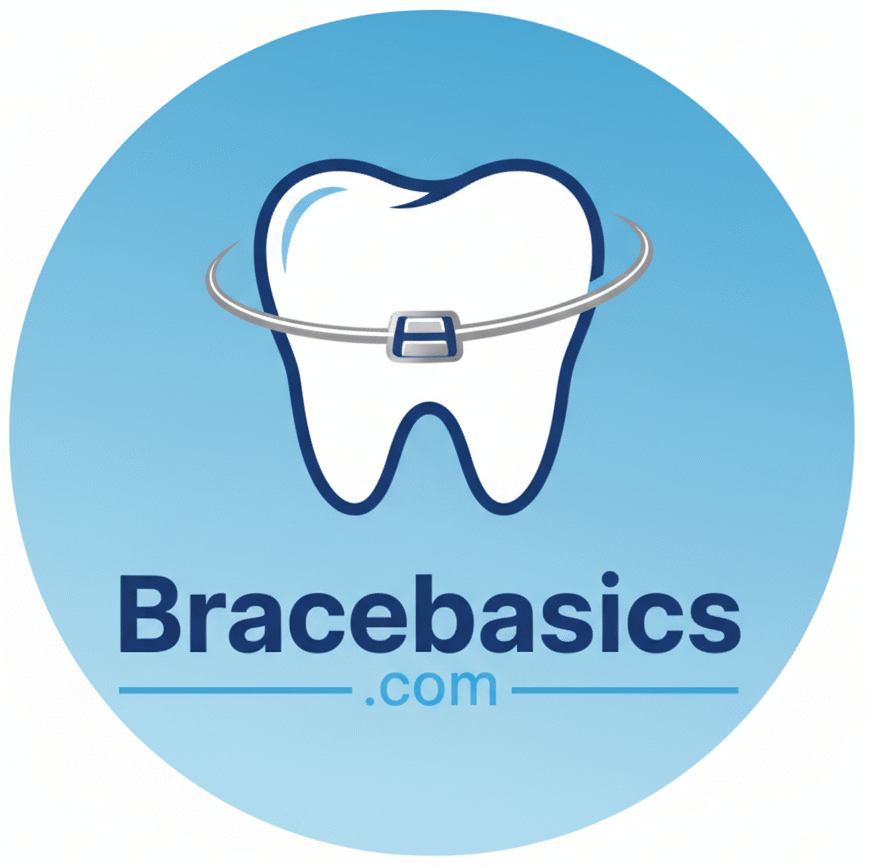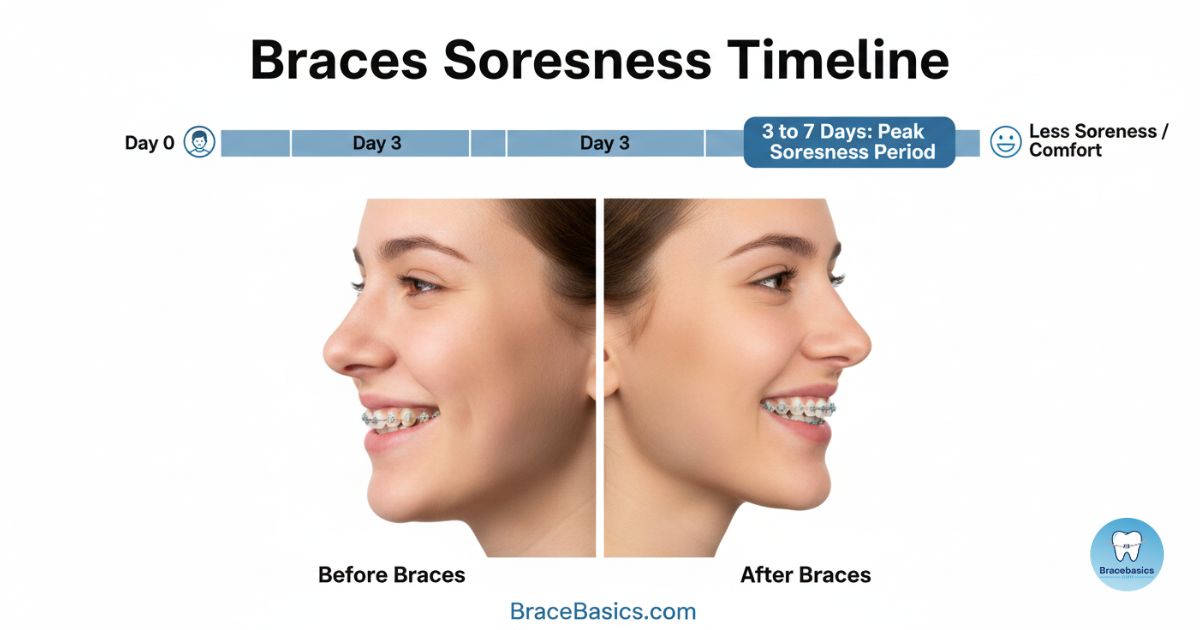Braces don’t just straighten teeth they can subtly reshape your jawline, enhance your facial symmetry, and give your profile a fresh boost. If you’ve ever asked “Do braces change your face shape?”, you’re about to discover how facial structure changes with braces, how braces effect on lips and cheeks plays out, and exactly how braces affect your profile.
Will Braces Change Your Face? Short Answer
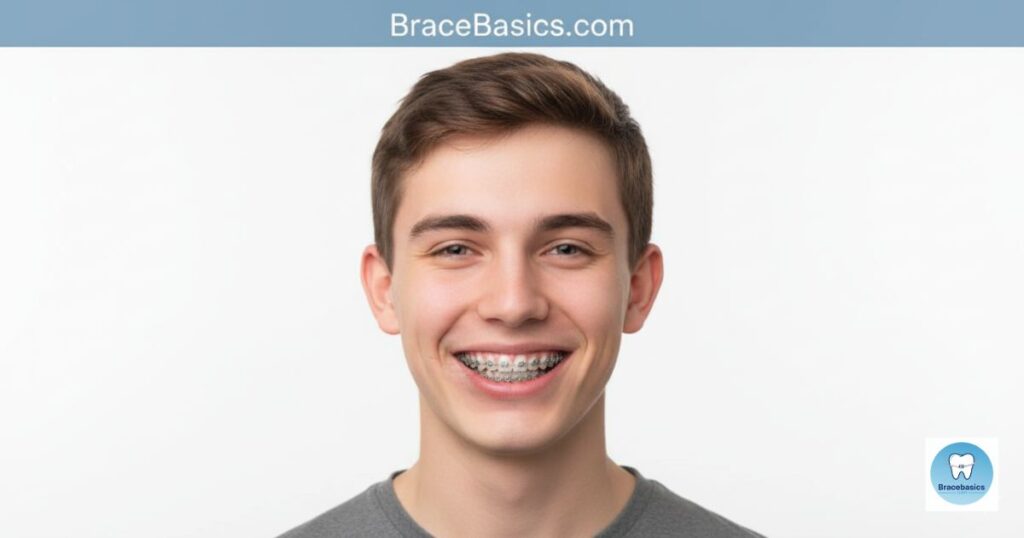
Yes braces can slightly change your face, but in a good way!
When braces move your teeth and align your jaw, they improve facial symmetry and balance your profile. These changes are usually subtle yet noticeable, especially around your mouth, lips, and jawline.
Here’s how braces can affect your face:
- Jaw alignment: Correcting an overbite or underbite can make your chin and jawline look more defined.
- Lip support: Straightened teeth can change how your lips rest, making your smile look more natural.
- Cheekbones and symmetry: A properly aligned bite helps your cheeks appear more even and balanced.
In short braces don’t “change your face” drastically, but they enhance your natural beauty by improving proportion and harmony.
How Do Braces Actually Work?
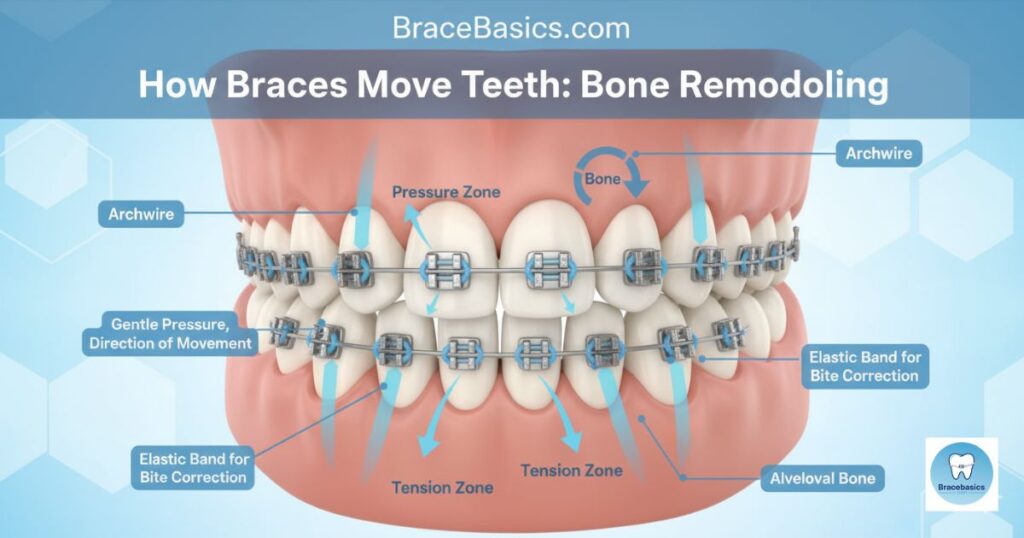
The magic behind braces lies in gentle, continuous pressure applied by wires and brackets. These appliances guide teeth into new positions, enabling bone remodeling, and correcting the orthodontic bite correction that may have thrown your facial harmony off-balance. Over time the jawbones adapt, the lips rest differently, and the cheeks reshape themselves in response to the new tooth and jaw positions. Now let’s see how these tiny brackets create big visual changes.
Even though braces primarily target teeth, the effects ripple outward. As the teeth alignment and jaw position improve, the surrounding facial muscles, skin, and tissue respond. It’s much like adjusting the foundation of a house—the walls may shift slightly as the base settles. That’s why orthodontic facial transformation happens: the entire system adapts.
1. Sharper Jawline and Improved Profile
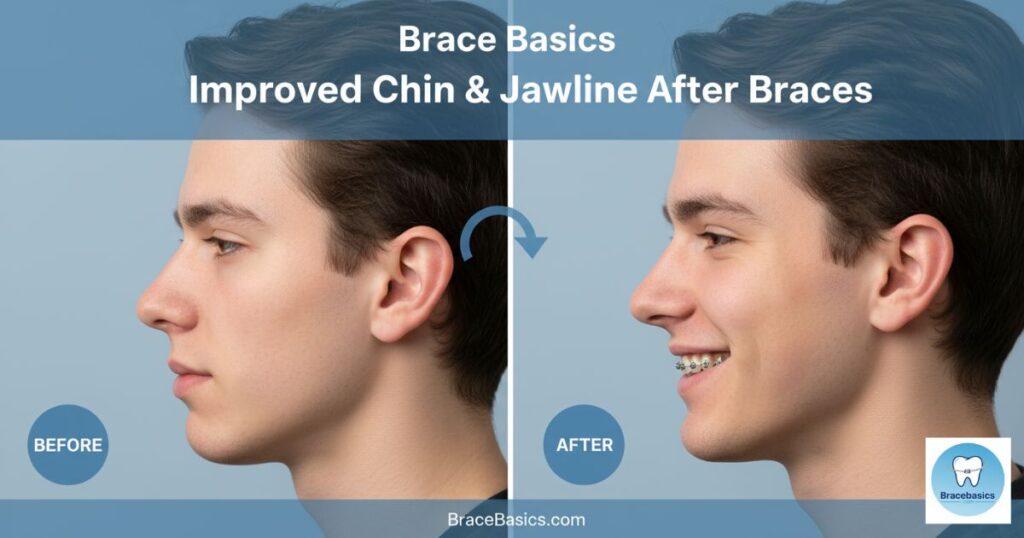
Correcting an overbite and underbite correction often means realigning upper and lower jaws so the chin no longer appears weak or protruding. When the jaw moves into its balanced position, your jawline improvement with braces becomes visible. Imagine someone with a deep overbite whose lower jaw advances forward slightly; after treatment their profile appears smoother and more refined.
In many cases the chin, which used to be hidden or overshadowed by misaligned jaws, comes into clearer focus. By addressing open bite facial appearance or underbite issues, the lower face becomes more harmonious. The result is not a dramatic makeover but a meaningful shift in how your face presents itself.
2. Better Facial Symmetry
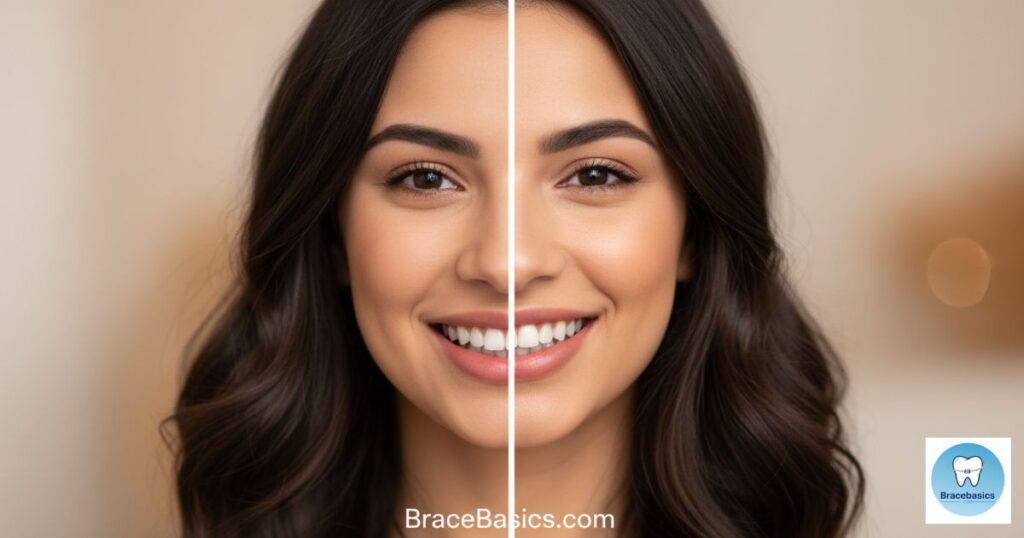
When your upper and lower teeth don’t line up, one side of your face can appear higher, wider or differently shaped than the other. Straightening teeth and aligning jaws leads to facial symmetry after braces, which taps into an unspoken rule of attractiveness. For example, someone might have had a smile that slanted one side upward; once treatment is complete, both corners settle evenly and the entire face appears more balanced.
The notion of symmetry doesn’t just apply to smiles—it extends to how your cheekbones, lips and jaw align. When the foundational dental structures are aligned, your face doesn’t have to compensate. Instead it rests naturally. That’s the power of orthodontic changes to nose and chin as well: when everything lines up, all the features sit in harmony.
3. Fuller Lips and Balanced Mouth Shape
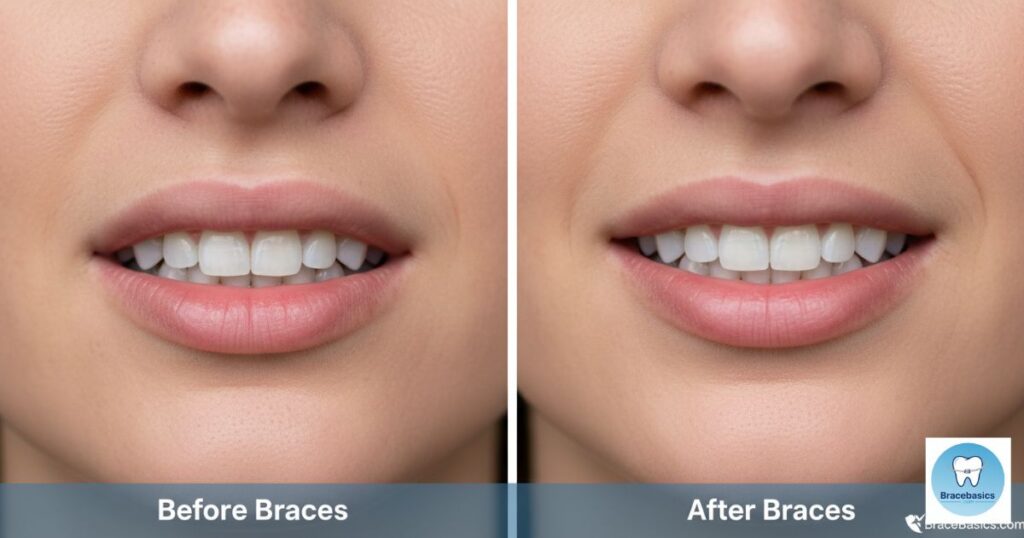
It’s tempting to think braces “make lips bigger,” but the real change comes from improved support. When teeth move backward or forward to correct issues like protrusion or spacing, the way your lips rest alters. This change gives your lips a fuller, more relaxed look—this is the braces effect on lips and cheeks in action. For instance, a person whose upper teeth protruded might have had lips that looked stretched; once aligned, the lips settle naturally and balance is restored.
Your mouth shape shifts too: when bite alignment improves, lips close more comfortably, and you no longer have to hold your mouth in a strained position. That leads to a softer mouth contour and more natural shape. The myth that braces “inflate” lips fades once you see the true mechanism: repositioning the foundation changes the rest.
4. Softer or More Defined Chin
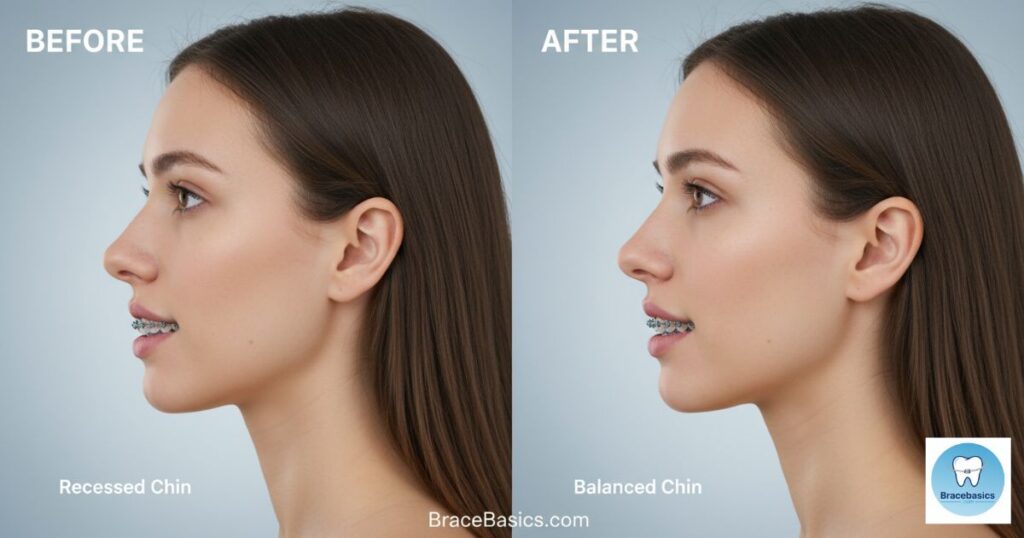
Depending on your original bite issue, braces can either soften an overly strong chin or give more definition to a recessed one. With an underbite, the lower jaw may jut forward, making the chin dominant; with an overbite, the chin might recede into the face. Aligning the jaws through braces or supplemental appliances addresses the braces impact on lower jaw and chin. After treatment, many patients find their chin looks more balanced rather than extreme.
The facial changes here are subtle yet meaningful. Your chin doesn’t suddenly become something new—it simply fits better within your facial structure. Someone with an overbite might experience a stronger-looking chin once the lower jaw catches up. For someone with an underbite the chin might appear more refined. The key point: braces don’t sculpt new bone but work within your existing architecture.
5. Enhanced Cheekbone Definition
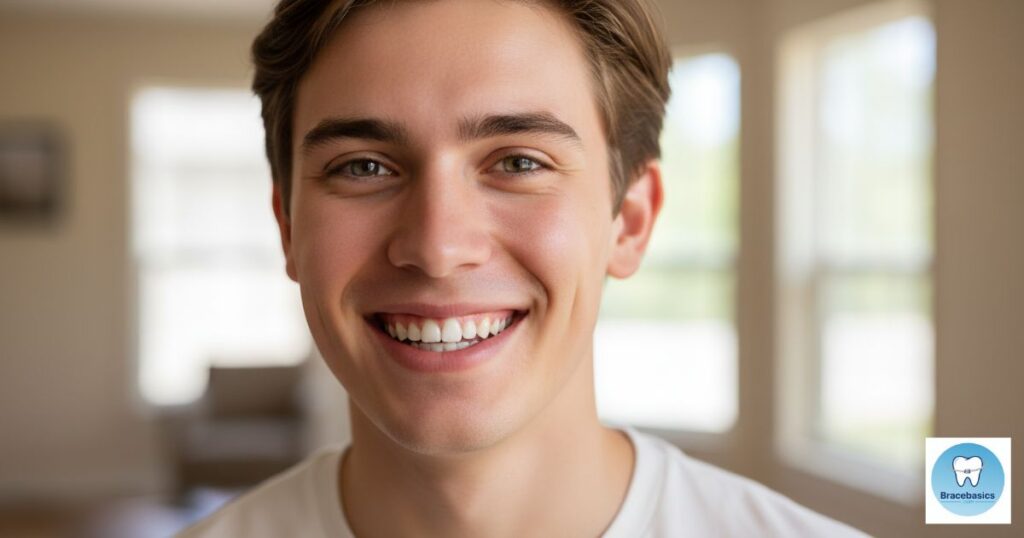
Straight teeth and well-aligned jaws allow the muscles around your cheeks and mid-face to relax and support themselves better. That means your cheekbones may look more defined, giving you a refreshed appearance. When teeth are crowded or the jaws misaligned, the cheeks sometimes appear flattened or hollow. Once alignment is achieved, the mid-face starts to regain volume and contour. Think of this as braces and confidence boost through structural refinement.
Also, when the bite and tongue posture become more balanced, your facial soft tissues stop “compensating” and can settle into their natural shape. The result is a more youthful look without surgery—simply a natural adaptation to improved alignment.
6. Smoother Facial Proportions
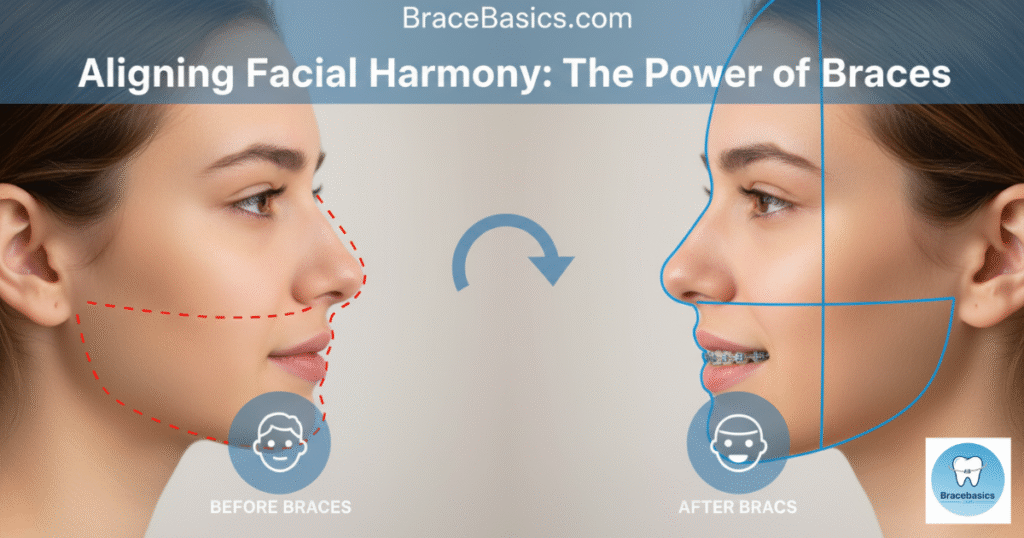
One way to visualize this is: imagine your face as a picture frame. If the bottom edge is misaligned or the sides are crooked, the image appears off. Braces correct vertical and horizontal imbalances—such as in an open bite facial appearance where the mouth appears long, or a crossbite where one side shifts. After treatment, the frame becomes aligned and your face looks harmonized. Some users describe this as “my face looks slimmer” though it is really better proportioned. That answers the question “Can braces make your face look slimmer?” in a nuanced way.
Another analogy: if you straighten a leaning fence, the house next door doesn’t change, but it looks better framed. Similarly, when your teeth and jaws align, your other facial features look better framed. That’s the magic of orthodontic facial aesthetics—refinement rather than transformation.
7. Boosted Confidence and Natural Smile Glow
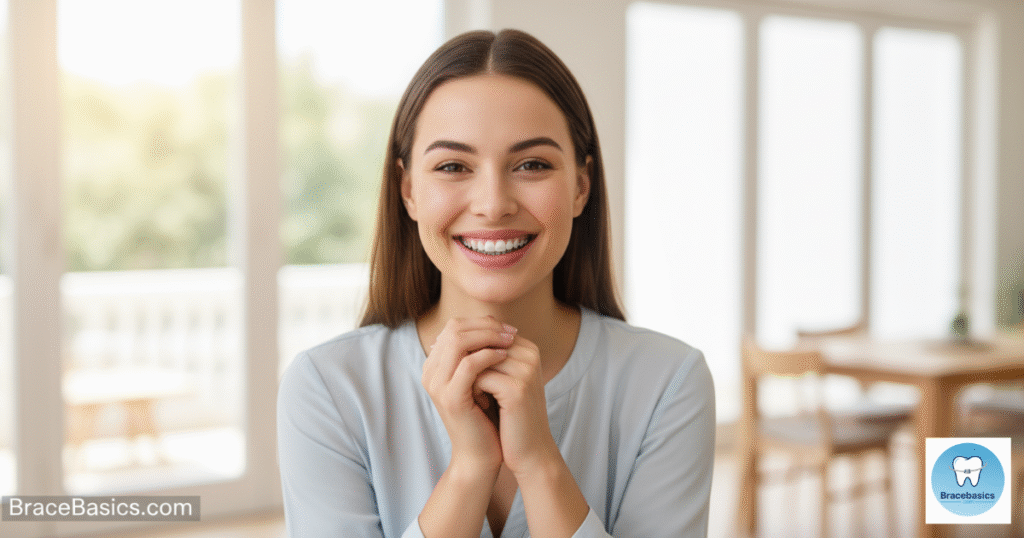
Beyond structural shifts, the most profound change comes from how you carry yourself. When you ask “Why do braces make your face look different?”, half the answer lies in the actual modification and half lies in the new confidence that shines through. A healthy, balanced smile changes your posture, your demeanor, and even the way you engage socially. That’s the real face change: the expression of confidence.
Moreover, when you smile without hiding your teeth or shifting your lips awkwardly, you activate different facial muscles. That alone improves your natural glow. So yes, the benefits of orthodontics beyond a straight smile include improved self-esteem, better social interaction, and more natural facial animation. A refined smile equals a refined face.
Does Age Matter for Face Shape Changes?
When it comes to braces treatment for adults and teens, age is a significant factor. Children and teenagers have bones that are still growing, making them more responsive to changes in jaw alignment and structural shifts. That means their adult orthodontic treatment results often include more visible facial changes. On the other hand, adults, whose bones are fully developed, can still achieve meaningful improvements—especially in the lower face and smile—but the changes are generally subtler. The difference lies in growth guidance vs soft-tissue adaptation.
In a simple table:
| Age Group | Change Potential | Key Mechanism |
|---|---|---|
| Children/Teens | Higher potential for structural change | Jaw growth + bite correction |
| Adults | Mainly aesthetic & alignment change | Soft-tissue response + refined bite |
In your case, whether young or adult, the question “Will my face change after getting braces off?” deserves serious attention. A thoughtful orthodontic plan tailored to your age, jaw status, and goals ensures that your transformation is both effective and natural.
Common Myths About Braces and Facial Changes
There are plenty of rumors swirling around orthodontics. One myth says “Braces completely change your face.” The truth? They refine—not remake—your features. Another myth: “Adults can’t see results.” Adults absolutely can, just with more gradual, subtle changes. And the third myth: “Lips get permanently bigger.” The reality is improved support and position, not artificial enlargement. Before and after braces face transformation isn’t about bursting change—it’s about subtle, harmonious evolution. Understanding difference between overbite and underbite correction plays into clearing up these misconceptions.
How Long Does the Soreness of Braces Last?
What to Expect Before and After Braces
When wondering “How long does it take to see facial changes with braces?”, keep in mind: you may notice early changes in the first few months—like lips sitting differently or jaws feeling tighter—but the full effect often spreads across the treatment duration. Early phases involve tooth movement; later phases allow facial soft tissues to adapt. A helpful tip: take before-and-after photos every few months so you can measure progress. As changes improve, your smile, cheeks, jawline and overall facial structure begin to settle into balance.
Expert Advice Before Getting Braces
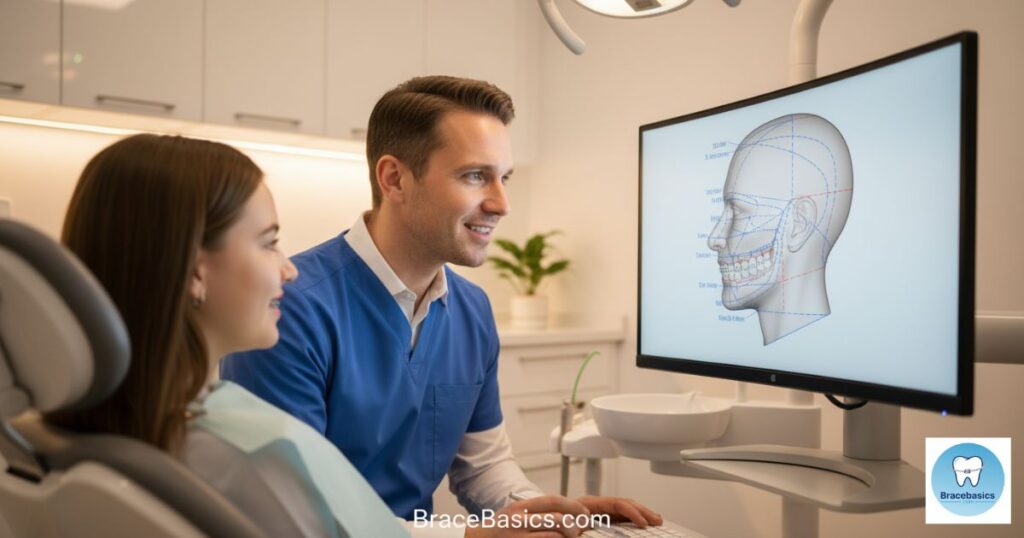
It’s wise to approach your orthodontic journey with questions. Ask a certified orthodontist: “How will braces change my facial profile?” and “What can I expect in terms of facial profile changes after orthodontic treatment?” Investigate whether your practitioner uses digital smile simulation software. This technological tool forecasts how your alignment changes might affect your face now and in the future. When you understand “Can orthodontic treatment make you look younger?”, you’re better prepared to invest in results you’ll love.
The Broader Benefits of Braces
A beautiful smile is just part of the story. Braces deliver improved chewing function, reduced jaw pain, better speech, and long-term oral health. These outcomes contribute directly to your facial health—healthy jaws, proper bite, and aligned teeth prevent strain and sag over time. Consider it another layer of adult orthodontic treatment results: it’s not just about how you look now, but how your face holds up through decades.
FAQs
Will braces change your face shape?
Yes, braces can slightly change your face shape by aligning your teeth and jaw. The result is a more balanced and symmetrical look.
How long does it take for braces to change face shape?
You may notice subtle facial changes after a few months, but the full transformation usually appears by the end of your treatment, around 12–24 months.
Will my face get slimmer after braces?
Sometimes! If your bite was misaligned, fixing it can make your face look slimmer or more defined, especially around the jaw and cheeks.
Are braces good for your face?
Absolutely! Braces improve not just your smile but also your facial harmony and jaw alignment, making your face look more natural and confident.
Ready for Your Smile Transformation?
If you’ve been considering, “Can braces improve facial harmony?”, this is your moment. Braces have the power to refine your jawline, re-balance your facial features, and give your confidence a serious upgrade. Don’t settle for just straight teeth—aim for a balanced face that radiates natural beauty. Reach out to a certified orthodontist today. Your face will thank you for it.
References
- How can Invisalign and Braces Change Your Face Shape? – Hawley Orthodontics
- Do Braces Change Facial Structure? – Sloss & Carpenter Orthodontics
- Do Braces Change the Shape of Your Face? – Wayne Family Dental
- Can Braces Change Face Shape? – Sivo
- Do Braces Change Your Face? – Brite Orthodontics
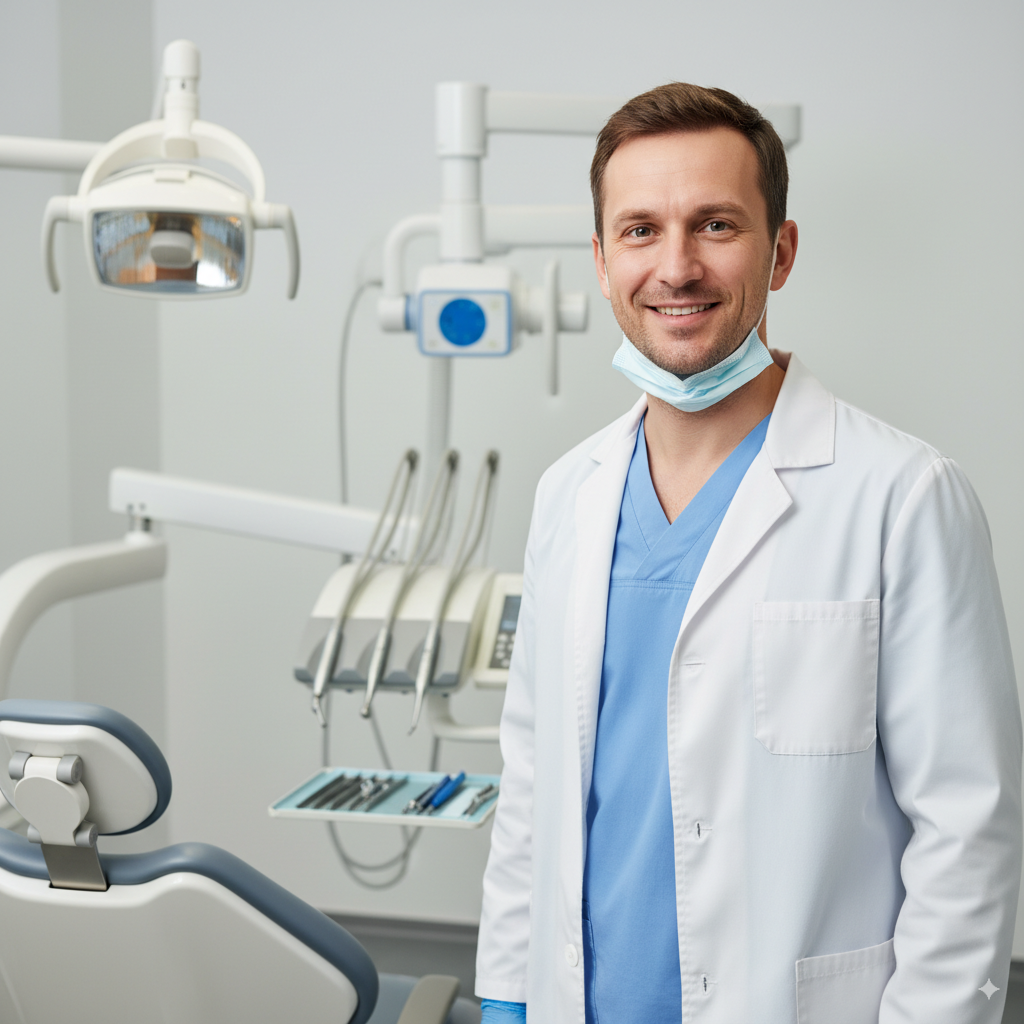
Hi, I’m Dr. Martin, the founder of BracsBasics.com. With years of experience in orthodontics, I’ve made it my mission to simplify braces care for patients of all ages. Here, you’ll find easy-to-understand advice, practical tips, and reliable resources to make your braces journey smoother, healthier, and stress-free. My goal is to help you smile with confidence every step of the way.
